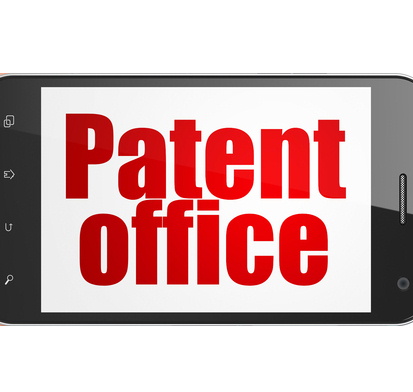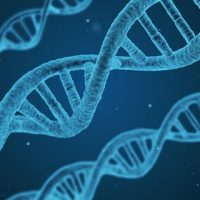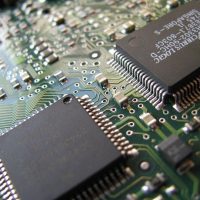Japan Patent Office publishes the Examination Guidelines for Patent and Utility Model.
The parts related to Restriction of amendment of claims are as follows (Chapter 4 Amendment for other than the Prescribed Purposes).
Chapter 4 Amendment for other than the Prescribed Purposes (Patent Act Article 17bis(5))
Article 17bis(5) stipulates that amendments of the claims made at any of the points in time set forth in the time for amendment (i) to (iii) below must be limited to any of the purposes set forth in (a) to (d) below. Amendment in breach of the provision is referred to as “amendment for other than the prescribed purposes.”
Timing of amendment
(i) Within the period specified in the final notice of reasons for refusal
(ii) Within the period specified in a notice of reasons for refusal accompanied by notification pursuant to the provision of Article 50bis
(iii) Simultaneously with an appeal against the examiner's decision of refusal
Purposes
(a) Deletion of a claim (Article 17bis(5)(i))
(b) Restriction in a limited way of the claims (Article 17bis(5)(ii))
(c) Correction of errors (Article 17bis(5)(iii))
(d) Clarification of an ambiguous statement (Article 17bis(5)(iv))
Unlike amendments that add a new matter, amendments in breach of the provision of Article 17bis(5) do not entail substantive deficiencies pertaining to the contents of the invention, and thus does not constitute the ground for invalidation. In applying the provision thereof, therefore, the examiner shall ensure, giving due consideration to the original objective thereof, that it will not be applied more strictly than necessary if the inventions at issue are found to be subject of protection and the examiner believes that the examination already performed can be used effectively to complete the examination process promptly.
1.2 Patent Act Article 17bis(6)With respect to amendments for restriction in a limited way of the claims (Article 17bis(5)(ii)), Article 17bis(6), applying mutatis mutandis of the provision of Article 126(7), further stipulates that the invention specified by the matters stated in the claims as amended must be independently patentable (requirement of independent patentability).
Amendments for restriction in a limited way of the claims may involve new prior art searches, unlike amendments for other purposes. Should the rule be that new reasons for refusal be notified only after such new prior art searches have revealed the lack of patentability of the amended invention, then a further amendment might be filed, making a further examination necessary; the Patent Act thus stipulates that if the requirement of independent patentability is not satisfied by the amendment for restriction in a limited way of the claims, the amendment shall be dismissed (Article 53(1)), in order to avoid repeated examinations and ensure fair treatment among patent applications.
This requirement is not applicable to amendments of claims not intended for restriction in a limited way of the claims.
This Chapter provides explanations of determination standards for those of the requirements applicable to amendments made at such points in time as set forth in any of (i) to (iii) of 1.1 above (paragraphs 3 to 6 of Article 17bis) which are stipulated in paragraphs 5 and 6 of Article 17bis as well as examination procedures, as follows.
Judgment criteria
- Restriction in a limited way of the claims and requirement of independent patentability (See 2)
- Deletion of a claim (See 3)
- Correction of errors (See 4)
- Clarification of an ambiguous statement (See 5)
Procedure of examination (See 6)
The examiner shall determine whether the amendment at issue is intended for restriction in a limited way as prescribed in Article 17bis(5)(ii) if it meets all of the requirements (i) to (iii) below.
(i) The amendment is intended to restrict the claims (see 2.1.1).
(ii) The amendment is intended to limit matters necessary for specifying the invention (in this part, herein after referred to as "matters specifying the invention") described in the claims as they stand before the amendment (in this part, herein after referred to as "pre-amendment invention") (see 2.1.2).
(iii) The pre-amendment invention and the invention as amended (in this part, herein after referred to as "post-amendment invention") are identical to each other in terms of the field of industrial application and the problems to be solved (see 2.1.3).
The examiner shall make a judgment on "scope restriction" for each claim, in principle; the claims provides a description of the invention for which a patent is sought, on a claim-to-claim basis.
For the avoidance of doubt, the examiner does not need to examine amendments not intended for restriction of the claims in terms of whether they meet the requirements (ii) and (iii) above.
(1) Examples of amendment not intended to restrict the claims
(i) Amendment that deletes part of the matters specifying the invention laid out in series
(ii) Amendment that adds an element to alternative statements
(iii) Amendment that increases the number of claims (except for amendments set forth in (2)(v) and (vi) below)
(2) Examples of amendment intended to restrict the claims
(i) Amendment that deletes an element from alternative statements
(ii) Amendment that adds a matter specifying the invention in series
(iii) Amendment that turns a generic concept into a more specific one
(iv) Amendment that reduces the cited claims in multiple dependent form claims
Example 1: Amendment that replaces "air conditioner equipment with a mechanism A as described in any one of claims 1 to 3" by "air conditioner equipment with a mechanism A as described in either of claims 1 and 2"
(v) Amendment that replaces dependent form claims by a lesser number of non-dependent claims
Example 2: Amendment that replaces "air conditioner equipment with a mechanism A as described in any one of claims 1 to 3" (claim dependent on three claims) by "air conditioner equipment with mechanism A as described in claim 1" and "air conditioner equipment with mechanism A as described in claim 2" (two claims)
(vi) Amendment that changes one claim into plurality of claims by restricting each of matters specifying the invention alternatively stated in said one claim.
(1) Recognition of the "matters specifying the invention"
The examiner shall recognize the matters specifying the invention in terms of their operation (such as their workings and roles), based on the statement of the claims and taking the statements of the description and drawings into consideration.
The operation of the matters specifying the invention can often be understood from the statement of the detailed description of the invention (see 3.1.1(2) and (3) of "Part II Chapter 1 Section 1 Enablement Requirement") and common general knowledge as of the filing.
(2) Interpretation of "limit"
Amendments that "limit" the matters specifying the invention refer to either (i) or (ii) below.
(i) Amendment that renders conceptually more specific one or more of the matters specifying the invention as described in the claims prior to amendment (note)
(Note) In respect of the matters specifying the invention (product) by way of its operation (such as a means of realizing its functions), any other matters specifying the invention by way of different operations are generally not recognized as conceptually more specific.
(ii) Amendment that deletes part of the alternatives from claims that express the matters specifying the invention as alternatives, such as Markush form claims
(3) Method for determining
The examiner shall determine whether the amendment at issue is intended to limit the matters specifying the invention, by comparing those identified separately for the pre-amendment invention and for the post-amendment invention.
(1) Recognition of the "field of industrial application" and the "problems to be solved"
The examiner shall identify the "field of industrial application" and the "problems to be solved," based on the matters specifying the invention identified from the statement of the claims and taking into consideration the statement of the technical field to which the claimed invention pertains and the problems to be solved thereby as included in the detailed description of the invention. For the avoidance of doubt, problems to be solved by the invention need not be unresolved ones.
(2) Interpretation of "identical"
The pre-amendment and post-amendment inventions are deemed "identical" to each other in terms of the field of industrial application if either of the conditions (i) and (ii) below is met.
(i) The technical fields to which they pertain coincide with each other.
(ii) The technical fields to which they pertain are closely related to each other technically.
The pre-amendment invention post-amendment inventions are deemed "identical" to each other in terms of the problems to be solved by them if either of the conditions (i) and (ii) below is met.
(i) The problems to be solved by them coincide with each other.
(ii) The problems to be solved by them are closely related to each other technically.
The following (i) and (ii) are some of the cases in which "the problems to be solved by them are closely related to each other technically."
(i) The problems to be solved by the post-amendment invention are conceptually more specific than those to be solved by the pre-amendment invention (such as "increasing tensile strength" vs "increasing strength").
(ii) The pre-amendment and post-amendment inventions address problems of a similar nature (such as "making something compact" vs "reducing the weight of something").
(3) Method for determination
The examiner shall determine whether the pre-amendment and post-amendment inventions are identical to each other in terms of the field of industrial application and the problems to be solved, by comparing those identified separately for the pre-amendment invention and for the post-amendment invention.
It should be noted that the delegated Ministerial Ordinance prescribed in Article 36(4)(i) is applied in such a way that, for inventions like (i) and (ii) set forth below which are found not to address any particular problems, a statement of problems to be solved will not be required (see 2.(1)b(c) of "Part II Chapter 1 Section 2 Ministerial Ordinance Requirement "). In such case, the identity of the problems shall not be a criterion.
(i) Inventions whose development is based on novel ideas that are totally different from prior art
(ii) Inventions based on discoveries following trial and error
Amendments intended for restriction in a limited way of the claims must also meet the requirement of independent patentability.
Independent patentability is examined solely for the claims subject to such amendments. The independent patentability test does not apply to claims subject to amendments that are intended solely for "correction of errors" or "clarification of an ambiguous statement" and not for restriction in a limited way, and claims that are not amended.
Whether or not the post-amendment invention is independently patentable or not shall be determined pursuant to the provisions set forth below. For the points to consider when dismissing amendments on the ground of noncompliance with the requirement of independent patentability, see 3.3 of "Part I Chapter 2 Section 6 Decision of Dismissal of Amendment."
(i) Patentability and Industrial Applicability (The main paragraph of Article 29 (1))
(ii) Novelty (Article 29 (1))
(iii) Inventive Step (Article 29 (2))
(iv) Prior Art Effect (Article 29 (2))
(v) Category of Unpatentable Invention (Article 32)
(vi) Description Requirements (Article 36(4)(i), and Article 36(6)(i) to Article 36(6)(iii)))
(vii) Prior Application (Article 39(1) to (4))
(i) Amendment that deletes a claims
(ii) Formal amendment of any other claim as an inevitable result of an amendment for claim deletion
The following (ii-1) or (ii-2) is a specific example of amendment type (ii) above.
(ii-1) Amendment that changes a citation number in other claims which cites the deleted claim
(ii-2) Amendment that changes a dependent claim into an independent one
"Correction of an error" is defined as "correcting an incorrect letter, word, or phrase to present the intended meaning that is obvious from the description, the claims, or the statement of drawings, or otherwise."
(i) It is intended to clarify an ambiguous statement (see 5.1).
(ii) It relates to the matters stated in the reasons for refusal in the notice of reasons for refusal (see 5.2).
(1) Interpretation of "ambiguous statement"
"Ambiguous statement" is a statement that is unclear or otherwise linguistically improper.
"Ambiguous statement" about the claims refers to any of (i) to (iii) below.
(i) The meaning of the statement of a claim is ambiguous.
(ii) The statement of a claim is unreasonable in relation to any other statement.
(iii) The statement of a claim is clear, but the invention described in the claim is ambiguous as it cannot be accurately specified technically.
(2) Interpretation of "clarification"
"Clarification" refers to correcting an ambiguous statement to clearly present its "intended meaning."
(3) Method for determining
The examiner shall determine whether or not the amendment at issue is intended to clarify an ambiguous statement, in light of (1) and (2) above. If the claim is clearly stated and the invention is technically clear, an amendment submitted for resolving any of the notified reasons for refusal (such as lack of novelty or inventive step) is not considered to be intended for "clarification of an ambiguous statement."
"Clarification of an ambiguous statement" is limited to one that relates to the matters stated in the reasons for refusal in the notice of reasons for refusal. The purpose of this is to prevent the filing of amendments pertaining to any matter not pointed out in the examiner's notice of reasons for refusal that would otherwise lead to the amendment of already examined portions and give rise to new reasons for refusal.
(1) Amendment that "relates to the matters stated in the reasons for refusal"
- Amendment intended to resolve a certain improper statement specified as a reason for refusal in a notice of reasons for refusal pursuant to Article 36
(2) Examples of amendment that do not "relate to the matters stated in the reasons for refusal"
(i) Amendment that limits any of the matters specifying the invention described in the claims, irrespective of inadequate statements specifically pointed out in a notice of reasons for refusal
(ii) Amendment that includes in any claim a new technical matter for the resolution of a new problem, irrespective of improper statements specifically pointed out in a notice of reasons for refusal
(Note 1) This includes the following timings (i) and (ii).
(i) Within the period specified in a notice of reasons for refusal accompanied by notification pursuant to the provision of Article 50bis
(ii) At the same time when a request is made for an appeal
(1) If the examiner finds under 2. to 5. that the amendment is intended for any of the matters set forth in the items of Article 17bis(5), then the examiner shall proceed with the examination on the assumption that the provision of paragraph 5 is satisfied.
If the examiner finds that the amendment at issue is intended to restrict the claims in a limited way (item (ii)), then the examiner shall examine it also in terms of whether the requirement of independent patentability (paragraph 6) is met (see 2.2).
(2) If the examiner finds under 2. to 5. that the amendment at issue is not intended for any of the matters set forth in the items of Article 17bis(5), then the examiner shall decide to dismiss the amendment (Note 2). If the examiner finds under 2 above that the amendment at issue is intended to restrict the claims in a limited way (item (ii)) but does not meet the requirement of independent patentability (paragraph 6), then the examiner shall decide to dismiss the amendment (Note 2). The examiner shall, in his or her dismissal decision, point out the amended matter which he or she finds does not meet the provision of paragraph 5 or 6, and provide a specific explanation of the reasons therefor.
(Note 2) For the amendment made at the same time when a request is made for an appeal (see (ii) of the note 1 above), the examiner shall not decide dismissal of the amendment except for cases of deciding to make a decision to grant a patent (Article 164(2)).
(Points to note)
As set forth in 1.1 above, in applying the provision of paragraph 5, the examiner shall ensure, giving due consideration to the original objective thereof, that it will not be applied more strictly than necessary if the inventions at issue are found to be subject of protection and the examiner believes that the examination already done can be used effectively to complete the examination process promptly.










